Cerro Bayo Project
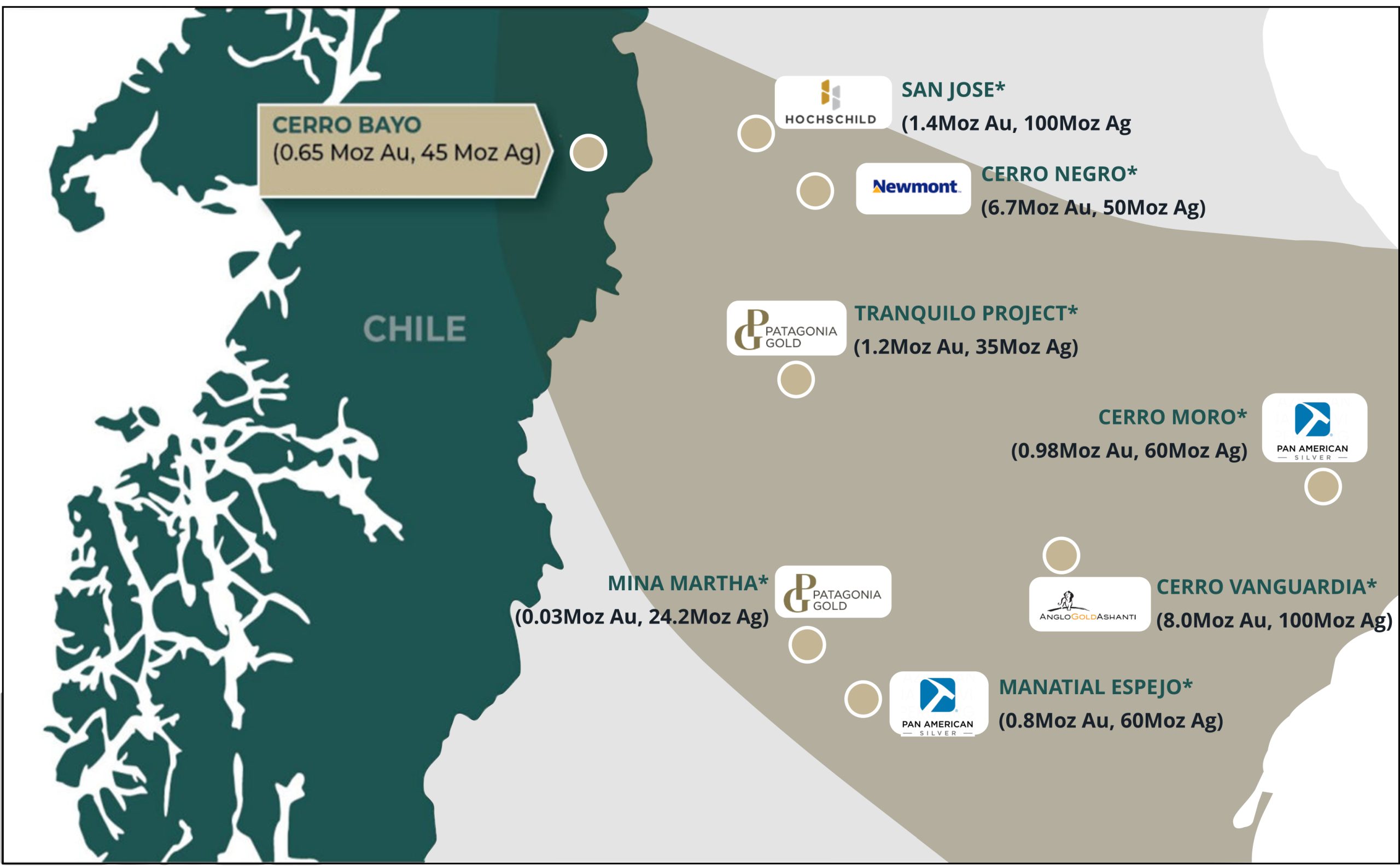
Overview
- The Cerro Bayo mine is 100% owned by Mitre Mining. The mine covers 285sq.km and comprises over 70 contiguous exploration concessions as well as surface properties that covers the areas of the Laguna Verde mining district and processing facilities.
- The Cerro Bayo Project was in production for over 15 years, producing more than 45Moz Ag and 650koz Au (~99Moz AgEq). The Project has been on care and maintenance since October 2022.
Location
- The Cerro Bayo mine is located 10km west of the town of Chile Chico in the Aysen region of Chile which is a 2.5hr commercial flight from Santiago that runs multiple times per day. Chile Chico has a population of ~4,000 people with skilled labour and major infrastructure including hospitals, schools and all weather road access to major deep-water regional ports.
Resource
- The Cerro Bayo project has a high grade resource of 5.03Mt for 50.2Moz at 311g/t AgEq. This resource comprises the existing Taitao open pit resource and the high grade underground mines of Delia Sth and Coyita SE. The Resource is supported by significant historic mining over a number of years by both open pit and underground as well as significant investment in drilling and geological knowledge.
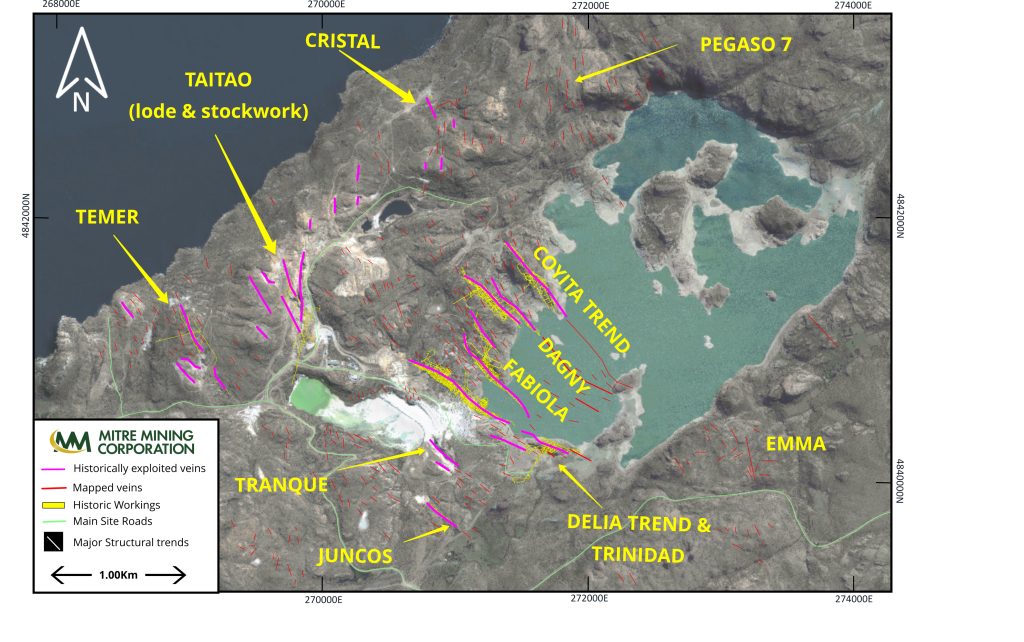
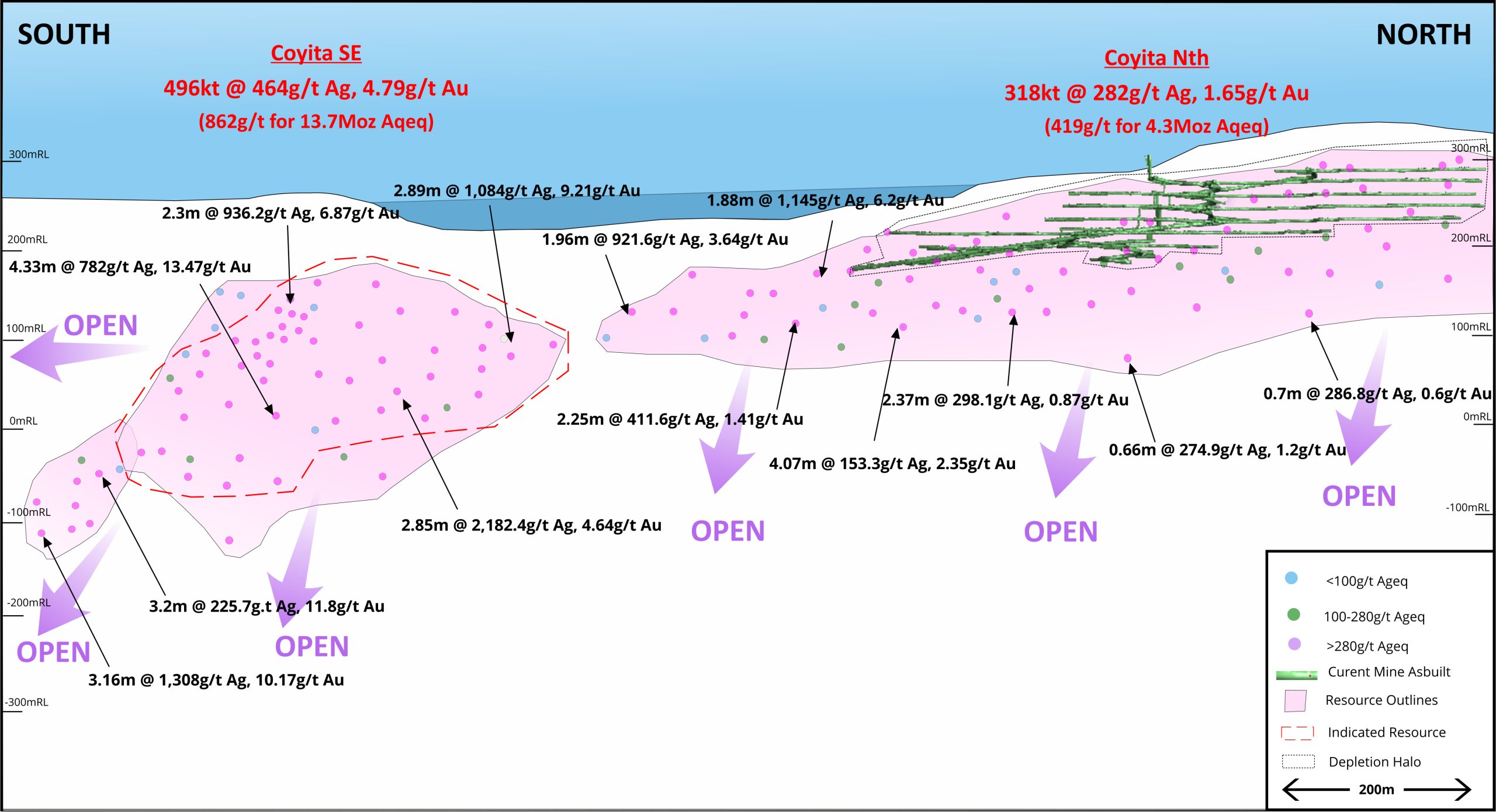
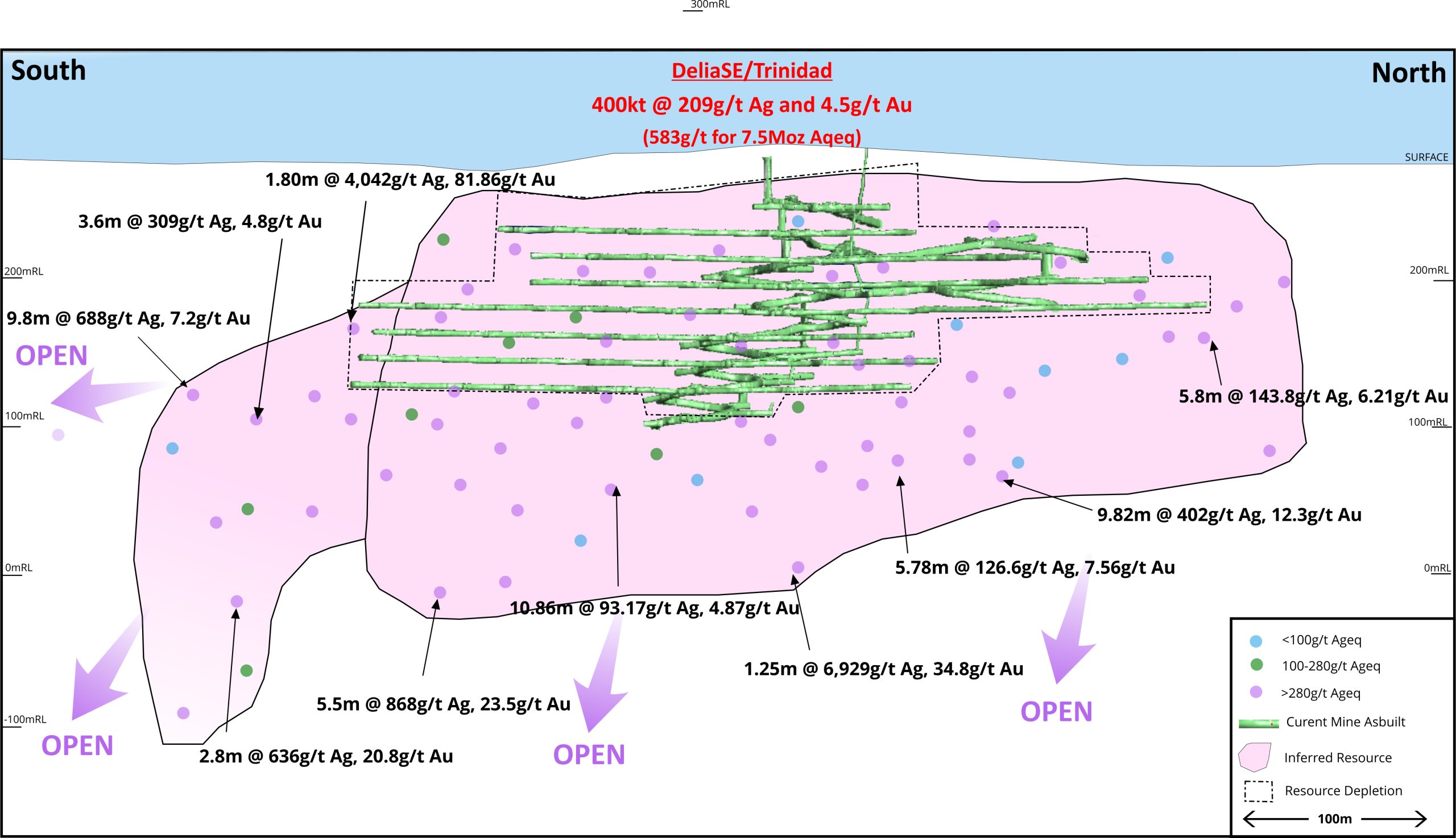
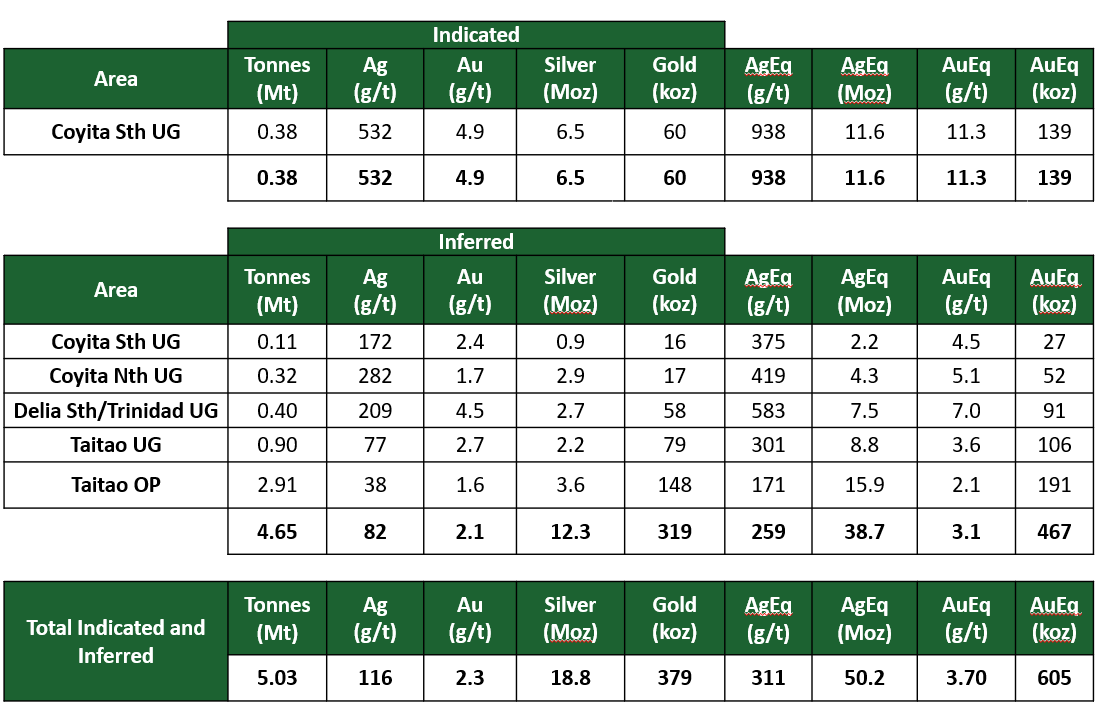
- Mineral Resources are classified and reported in accordance with the 2012 JORC Code.
- Open pit resources are reported to a cutoff grade of 65g/t AgEq.
- Pit optimisation shells were used to constrain the resource using a gold price of US$1,850/oz and Silver price of US$24/oz.
- Taitao Underground Mineral Resources are reported at a cut-off of 165g/t AgEq beneath the open pit. Delia, Coyita and Trinidad Resources are reported at a cut-off of 200g/t AgEq.
- Silver equivalents are calculated using the equation AgEq = Ag(g/t) + (83 x Au(g/t) and gold equivalents are calculated based on the equation AuEq = Au(g/t) + (Ag(g/t) / 83) based on a gold price of US$1,900/oz and Silver price of US$23/oz. Metallurgical recoveries for gold and silver are closely linked and are typically 92-93% for gold and silver. The Company considers the estimation of metallurgical recoveries in respect of exploration work to be reasonable based on the past processing records from the nearby Cerro Bayo plant between 1995 and 2016, and work undertaken in preparing the mineral resource estimate. It is the Company’s view that all elements in the silver and gold equivalents calculations have a reasonable potential to be recovered and sold.
- Bulk Density of 2.63g/cm3 has been applied to veins and 2.57g/cm3 has been applied to stockwork and waste domains.
- No internal selectivity or dilution has been applied and the stockwork domains have been modelled using an SMU of 2.5m x 5m x 2.5m (X,Y,Z) with dilution incorporated into the SMU.
- Numbers may not add due to rounding.
Geology
- The mineralization is typical of a low sulphidation type and is interpreted to be of a multi-stage, open space filling epithermal origin resulting in mineralized veins, stockworks and breccias. Two different mineralization events can be recognized at Taitao. A mesothermal early stage Ag-Mo-Zn-Pb with subordinated gold, well exposed in the Taitao and Breccia zones; and, a late stage typical epithermal gold-silver rich system, of the low sulfidation type, representative of the main mineralization stage of the district, represented by the NW trending Condor vein systems.
- Two main vein systems are recognized at Laguna Verde. NS to NNE trending brecciated veins and breccias varying in dip from vertical to 45º E, and N15ºW to N35ºW oriented veins varying in dip between vertical and 75º NW and SE. Strike lengths up to 1.5km have been recognized in some of the vein systems evaluated to date. Widths are highly variable between the different vein systems and in individual veins along-strike and down-dip varying from centimetres up to 50 meters in breccias and stockworks (sheeted zones).
- Brecciated veins and tectonic breccias are the typical structures of the early stage mineralization while the stage epithermal mineralization is represented by banded veins, locally brecciated. They consist mainly of fine-grained quartz and chalcedonic silica, adularia, and fluorite, with minor amounts of barite and carbonates. The general sulfide content is low, less than 5%, being higher in the early stage event. Sulfides are mainly pyrite, silver sulphosalts and locally sphalerite as disseminations, clusters, and bands.
- Across the project the topographic exposure shows all levels traditionally seen in an epithermal system. 30% of the property is weathered to the main Ag/Au and Au boiling zones with a large part of the underexplored ground sitting between the Raul/Cascada to Sinter Hill target area. It is believed that this has seen the least historic exploration as veins are not outcropping but are present deeper below the topography.
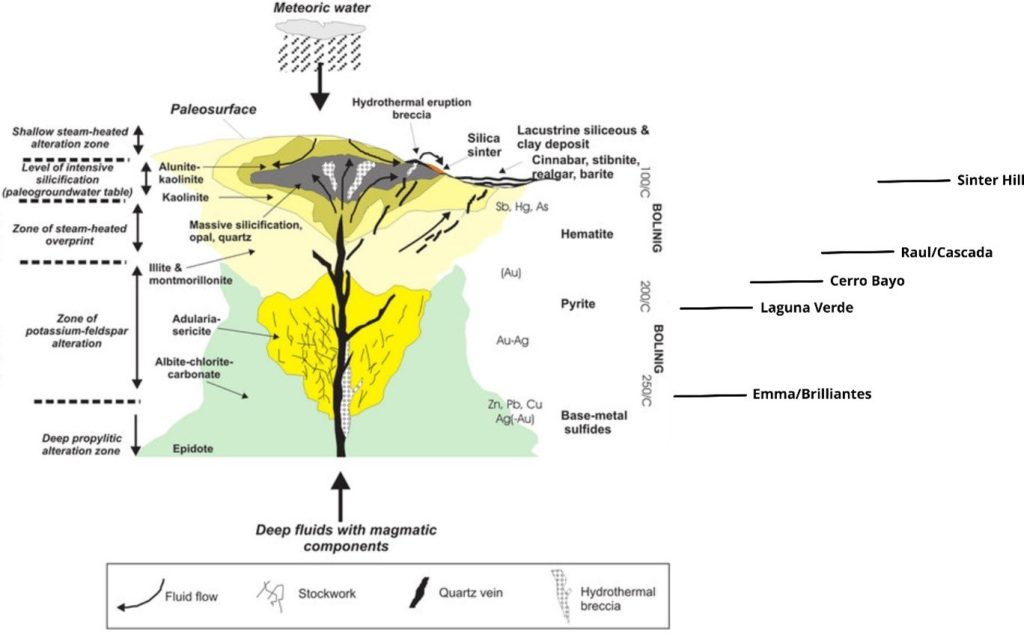
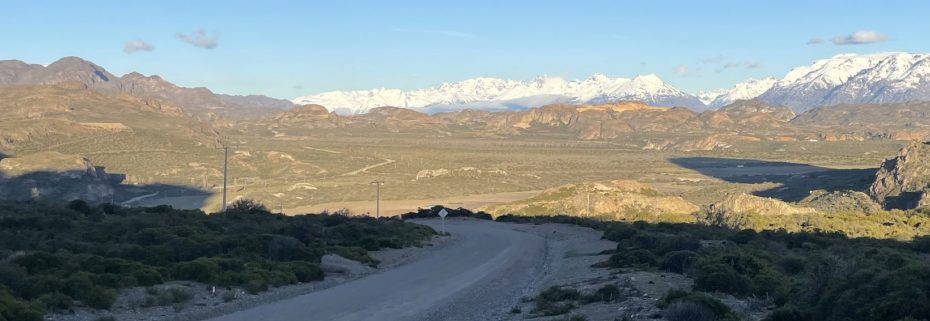
Exploration
- There is extensive areas within the existing mine area as well as greenfields targets to support future resource growth. Approximately 50% of the tenure remains undrill tested with a further 25% under drilled. Established greenfield targets within the know tenure that have not been drill tested that will be targeted for future drilling includes the Raul West, Claudia Vein and Draught Master vein swarm.
- Further greenfields exploration will be conducted East and Southeast of the Cerro Bayo Dome through to Sinter Hill where the topography increases and early stage programs such as IP and Magnetic surveys, Alteration studies and on ground mapping will need to be conducted to establish target zones. This area covers